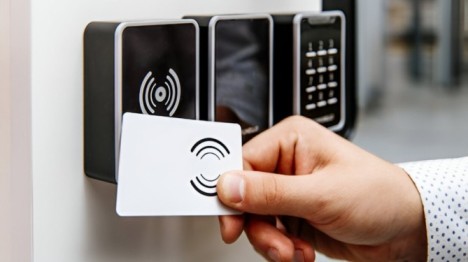Securing locations is not just about locks and keys. Smarter threats require smarter access control. In offices and residential homes, new systems offer enhanced security, convenience, and peace of mind that traditional measures can no longer provide.
Restricting Unauthorised Access
It’s as simple as daylight saving, thanks to a wise door access control system, which tells you who’s in and who’s not. Unlike misplaced, copied, or used incorrectly old keys, entry cards or biometric recognition give access only to authorised individuals without any concern for those drifting into off-limits spaces. Whether you have a school, an office building, or a home, the system is operating at every point of entry. It’s a convenient, efficient way to keep unwanted intruders out and allow the right individuals inside without endless vigilance and guesswork. It provides a safety factor hard to achieve with traditional locks.
Centralised Monitoring and Control
Instead of half a dozen locks to contend with or phoning around to find out who has which key, centralised control holds it all together in one spot. Lock and unlock doors, grant permissions, and view entry logs, all from one place. That sort of transparency makes for faster response and more informed decision-making. Even high-rise buildings are a snap when you have complete control. It’s a huge time-saver and deconflicts. Under centralised control, you don’t have to chase people down or question whether the building is shut up; you know. That kind of control instills confidence and a sense of security into any hectic setting.
Audit Trails for Increased Responsibility
Access control systems track every tap, swipe, or scan in great detail. That’s having a built-in audit trail of who was where and when. This is not only a sound idea in the event of a security break-in; it settles arguments internally and monitors work time, as well. In case of a failure, the audit trail is a louder voice than any apology. You don’t need to wonder or point fingers; the facts are already on record. It’s having an invisible witness at every doorway, making people honest and processes transparent. Accountability has just become a lot more severe.
Integration with Other Security Systems
An access control system is even more efficient if it is accompanied by other security devices. CCTV, alarms, and intercoms can be linked to it, and they are a team player. A break-in attempt, for instance, can cause alarm or video recording security. During an emergency, such as a fire, doors will open automatically for evacuating. It is through such intelligent connectivity that so many systems are able to aid one another, respond, react, and leave everyone safe. Rather than operating in silos, your entire security infrastructure is a collective that assists one another in real-time. It converts your security from passive defence to active prevention.
Flexible Access for Different User Groups
Not all users need access to all things, and flexibility comes into play there. Access control enables you to offer entry levels based on roles or responsibilities. The receptionist will not require access to the server room, and the night shift will not require daytime credentials. You can handle time constraints, limit mobility into specific areas, or create temporary passes for travellers and visitors. Individuals get just what they need and no more, no less. Keeps it all neat, safe, and simpler without overburdening anyone. Various needs, varied permissions, and a single system to do them all.
Remote Access and Management
Outside the building but still in control, that’s convenient. Remote access allows you to allow or block entry, lock up, or review access history through your phone or computer. Want to let a contractor in after dark? One click, done. Get alerted when you’re away? Check the status at your fingertips. No more late-night drives or stuck at a front desk anymore. With remote, your building is secure and you’re in command, whether you’re in house, out front, or halfway across the country.
Reducing Key Duplication Risks
Keys are replicable. Cards can be misplaced. But biometric information or encrypted credentials? Difficult and much harder to manipulate. With an access control system, if you lose your access card, you just disable and replace it, no rekeying all the locks in the building. The nightmare day of someone secretly copying your keys is in the past. It’s a neater, safer system that prevents you from being one lost key away from a major security issue. Smart access means less risk and less shock.
Conclusion
In today’s pace and turmoil, safety cannot be an afterthought. A contemporary access control system brings order, discipline, and due security to any environment. It provides you with the means to control entry, monitor activity, and act in time, hassle-free and without guesswork. For anyone serious about security, it’s not a choice.



